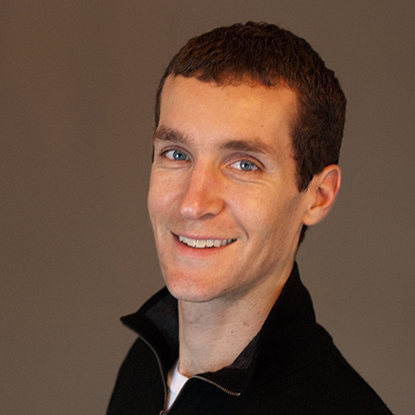There are few feelings in life better than "the pleasure of findings things out," as Richard Feynman would say. I enjoy the process of kindling this pleasure in students, first by showing them how concepts from physics are relevant to their everyday lives, then by setting them loose to investigate whatever topics they find fascinating (projects are an important element of many of my courses). As students endeavor to explore new territory, I often learn as much from them as they learn from me.
In my research, I am a biophysicist with a particular interest in questions pertaining to the brain. How do the 86 billion neurons of the human brain collectively generate the ability to run, talk, read, love, do physics, and think about themselves? And how might we better treat people with conditions such as epilepsy and Parkinson's disease? My students and I approach these problems by using tools from physics to conduct computer simulations of brain activity.
Fink CG (2017). "An Interactive Simulation Program for Exploring Computational Models of Auto-Associative Memory," Journal of Undergraduate Neuroscience Education, 16(1), A1-A5.
Fink CG (2017). "An Algebra-Based Introductory Computational Neuroscience Course with Lab," Journal of Undergraduate Neuroscience Education, 15(2), A117-A121.
Shtrahman L, Maruyama D, Olariu E, Fink CG, and Zochowski M (2017). "Understanding spatial and temporal patterning of astrocyte calcium transients via interactions between network transport and extracellular diffusion," Physical Biology, 016001.
Mofakham S, Fink CG, Booth V, and Zochowski M (2016). "Interplay between excitability type and distributions of neuronal connectivity determines neuronal network synchronization," Physical Review E, 94(4), 042427.
Gliske S, Stacey WC, Lim E, Holman K, and Fink CG (2016). "Emergence of narrowband high frequency oscillations from asynchronous, uncoupled neural firing," International Journal of Neural Systems, 27(1).
Fink CG (2016). "Simulating synchronization in neuronal networks," American Journal of Physics, 84(6), pp. 467-473.
Fink CG, Gliske S, Catoni N, and Stacey WC (2015). "Network mechanisms generating abnormal and normal hippocampal High Frequency Oscillations: A computational analysis," eNeuro, 2(3): 0024.
Leone MJ, Schurter BN, Letson B, Booth V, Zochowski M, and Fink CG (2015). "Synchronization properties of heterogeneous neuronal networks with mixed excitability type," Physical Review E, 91(3), 032813.
Fink CG, Zochowski M, and Booth V (2013). "Neural network modulation, dynamics, and plasticity," Global Conference on Signal and Information Processing (GlobalSIP), 2013 IEEE, pp. 843-846.
Fink CG, Murphy GG, Booth V, and Zochowski M (2013). "A dynamical role for acetylcholine in synaptic renormalization," PLoS Computational Biology, 9(3): e1002939.
Fink CG, Booth V, and Zochowski M (2012). "Effects of the frequency dependence of phase response curves on network synchronization," Chapter 19 in Phase Response Curves in Neuroscience: Theory, Experiment, and Analysis (Springer).
Fink CG, Booth V, and Zochowski M (2011). "Cellularly-driven differences in network synchronization propensity are differentially modulated by firing frequency," PLoS Computational Biology, 7(5): e1002062.
*Student authors shown in bold

